At last, we have reached New Mexico with plans to stay in Carlsbad for a couple of weeks. With plans to visit the two National Parks near here (Carlsbad Caverns and Guadalupe Mountains), we started at Carlsbad Caverns.
On our way to the Visitor Center, we stopped to check out this large cliff overhang. Interpretive signs along a short trail to the rock shelter provide insight into the generations of Native Americans that once lived here. Ashes, pieces of bone, flint flakes and other findings show that the area (and others in the park) were used for centuries.
A spur trail leads to an area that is an intermittent water hole.
We also stopped at the Walnut Canyon Vista Trail that provides beautiful views of the canyon.
Continuing on, we arrived at the busy Visitor Center. This is where you can purchase tickets for various cave tours, obtain information about the park, and see the various exhibits about the natural and cultural history of the park.
I found the geologic history of this area fascinating. An inland sea covered much of New Mexico and west Texas during the Permian Period (299-260 million years ago). Sponge and algae created a 400-mile long reef, but when the sea was cut off from the larger ocean (about 260 mya) the water evaporated. Salt, gypsum, and calcite filled in the basin and buried the reef. The reef became limestone and as tectonic uplifts occurred, cracks developed permitting rainwater to seep into them. Over millions of years, the spongework in the limestone enlarged into huge chambers that can be seen today at Carlsbad.
Stalactites, stalagmites and a wide variety of other formations in the caves began forming 500,000 years ago. Each is created by by water that dripped into the limestone bedrock and the cave.
A model of Carlsbad Cavern is shown below. Both guided and self-guided tours are available for visitors. There is an elevator that takes you down into the Big Room (8.2 acres in size!), but it was temporarily out of order when we visited. (We are hoping it gets fixed before we leave because a hike down via the Natural Entrance is 1.25 miles and equivalent to 75 flights of steps, as is the hike back up). I had planned to hike down, as there are interesting sights to see along the way, but was thinking the elevator was the way best way to return to the surface! We’ll see...
Over 100 caves have been found at the national park, including the the deepest cave in the US, Lechuguilla Cave. Explorers dug through the floor of a small cave to discover it in 1986. It is not open to the public as exploration continues in this pristine cave. In 1898, Jim White noticed a huge swarm of bats emerging from the ground. Returning a few days later with rope, wire and lanterns, he began his exploration of the cave. For the next 45 years, he continued to explore and support use of the cave.
Hundreds of thousands of Brazilian free-tailed bats make Carlsbad Cavern their home from April to October (migrating from Mexico). It is a maternity roost for the female bats who give birth to their young (pups) in June while hanging from the ceiling by her toes and thumbs. The pups remain on the ceiling for the next 4-5 weeks. Up to 300 bats can crowd into one square foot of the ceiling! The adults emerge at dusk and return at dawn after a night of feeding on insects. By October all return to Mexico. We leave here 4/18/18 and are hoping we may see some before our departure. I find this stuff fascinating!
Between 1902 and 1958, guano (bat droppings) mining occurred at the park. Workers collected it in sacks that were loaded onto an ore train in the cave or hoisted via a shaft to the surface. Dried and screened at a local facility, it was sold locally for use in vegetable gardens while most of it was sent to California for citrus groves.
Below is a timeline of significant milestones at the park and a park map.
- 1923 - Established as a National Monument
- 1926 - First cave trail constructed; lighting installed
- 1930 - Designated 26th National Park
- 1931 - First elevator installed
- 1937 - 1 million visitors
- 1963 - Bat Flight amphitheater opened
- 1995 - Designated World Heritage Site
While there are 50+ miles in the park’s trail system in the backcountry, leashed pets are only permitted on the short, paved, Chihuahuan Desert Nature Trail near the Visitor Center.
Native Americans ate the buds, flowers, seed pods and weaved leaf fibers into sandals, rope, matting, and baskets of the Torrey Yucca. Soap was made out of the roots as well. Also shown is the bloom of an ocotillo, a spiky tall plant that looks dead until spring.
Below is the location of one of the two shafts built in 1903 to support guano mining. Buckets on cables were used to lift the guano out of the cave. Operations were discontinued here in the 1920s, but mining continued in other areas of Carlsbad Cavern and other caves in the park.
Interpretive signs along the trail rovide information about the plants and wildlife in the desert here.
Below is a view of the Bat Amphitheater at the Natural Entrance of Carlsbad Cavern. Ranger-led programs are held here when the bats are here to observe their evening swarm.
We decided to check out the Walnut Canyon Desert Drive, a one-way, 9.5-mile, gravel, loop road that winds through desert mountain scenery. We had picked up a guide brochure in the Visitor Center as there are 18 designated stops along the route.
This chunk of limestone shows the forces of nature that formed Carlsbad Cavern on a miniature scale. Vertical cracks form from the pressure of the earth’s movement. Acidic water seeps into the cracks, slowly dissolving it and forming “caverns.” Also, it’s always a treat to see flowering plants in the desert!
The reef formed by the Permian Sea (250 millions years ago) can be seen from the Rattlesnake Canyon trailhead.
The Rattlesnake Canyon overlook provides a fantastic view of the canyon. We would love to hike the trail here, but again, dogs are not permitted in the backcountry of the park.
In the late 1800s, homesteaders began moving to the area. Below is the foundation of the house of John and Alma Lowe who started a ranch here to raise goats. A source of water was a key ingredient of a successful operation in the arid climate. Remains of a cistern can be seen on a nearby hill.
Another stop along the drive is at this pond (well, sometimes it is a pond). Water from infrequent rains gather here and is, of course, a popular spot for wildlife. Even when there is no water in the pond, it can be found below the surface of the soil.
We continued the drive stopping a various points to explore the interesting rock formations. Lots of rock shelters were used by Native Americans for thousands of years here.
We hope to do the self-guided tour of Carlsbad Cavern before we leave the area. After all, that’s what I have wanted to see for years! For additional information about cave tours and other details of Carlsbad Caverns National Park, go to www.nps.gov/cave.
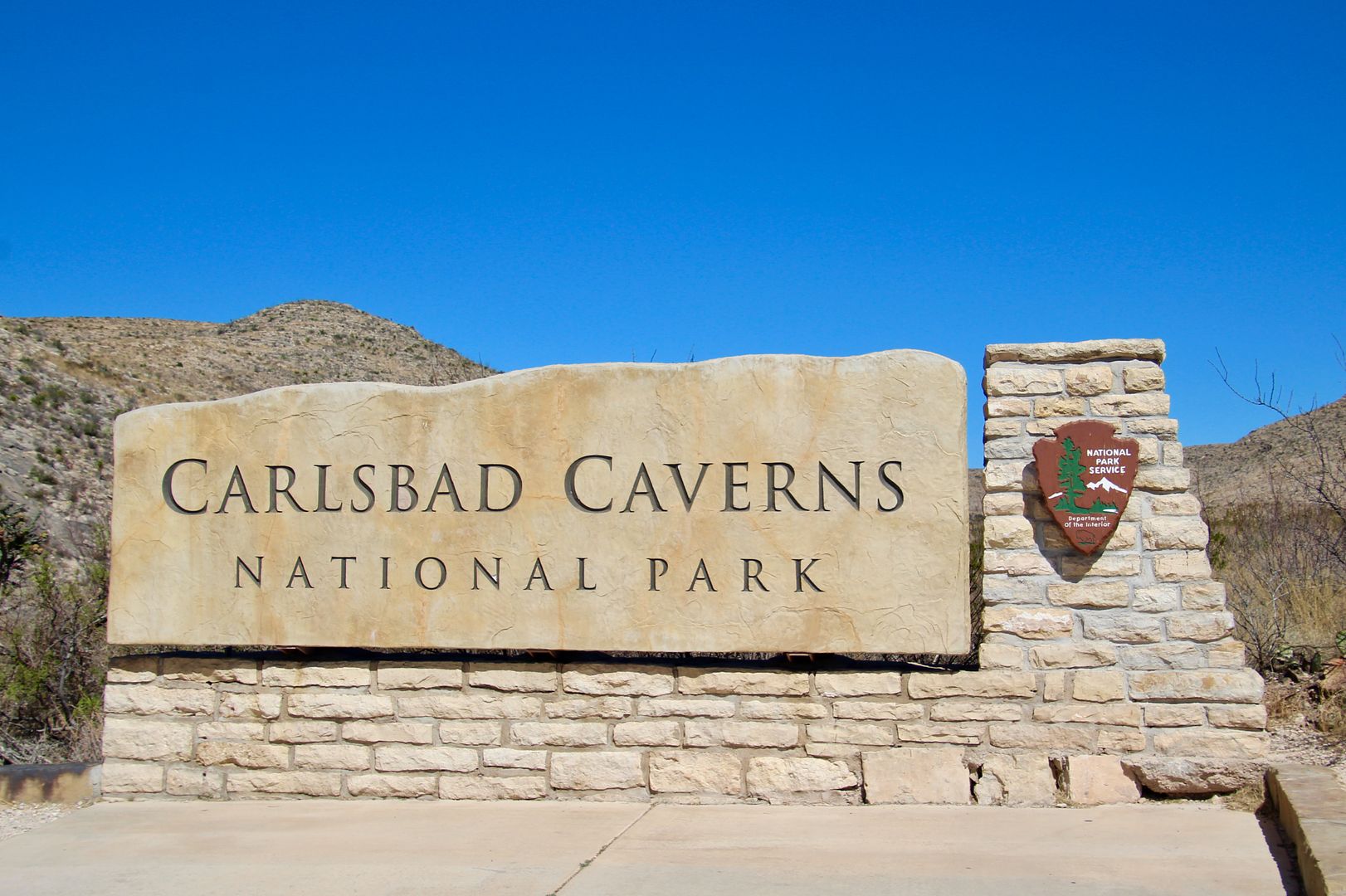

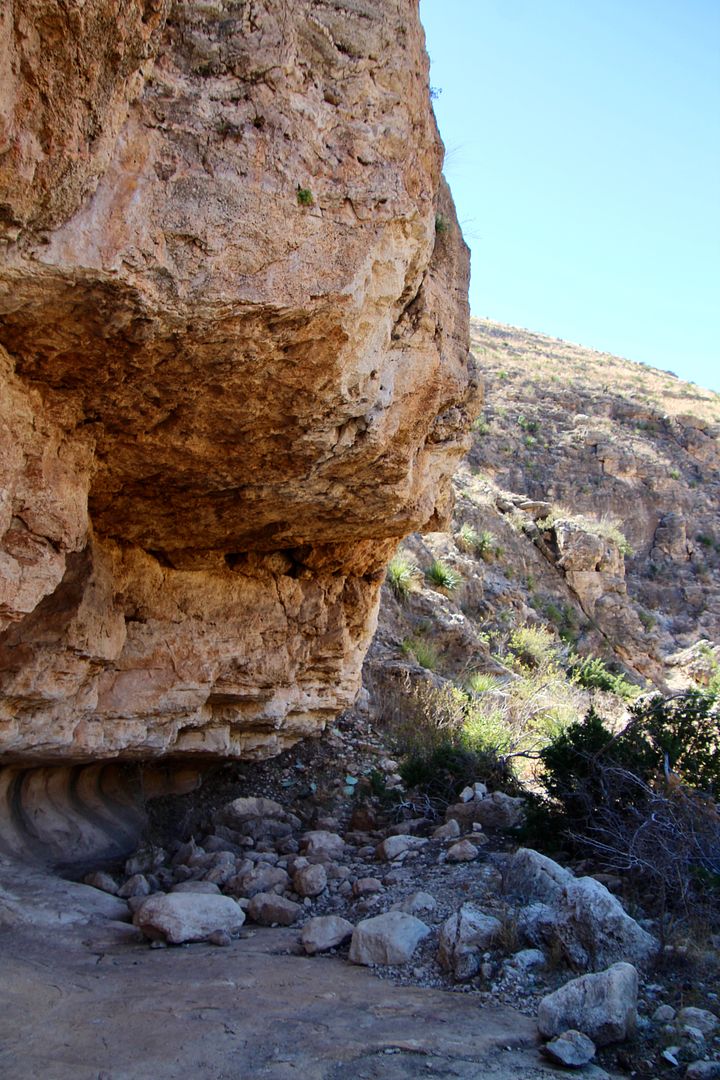
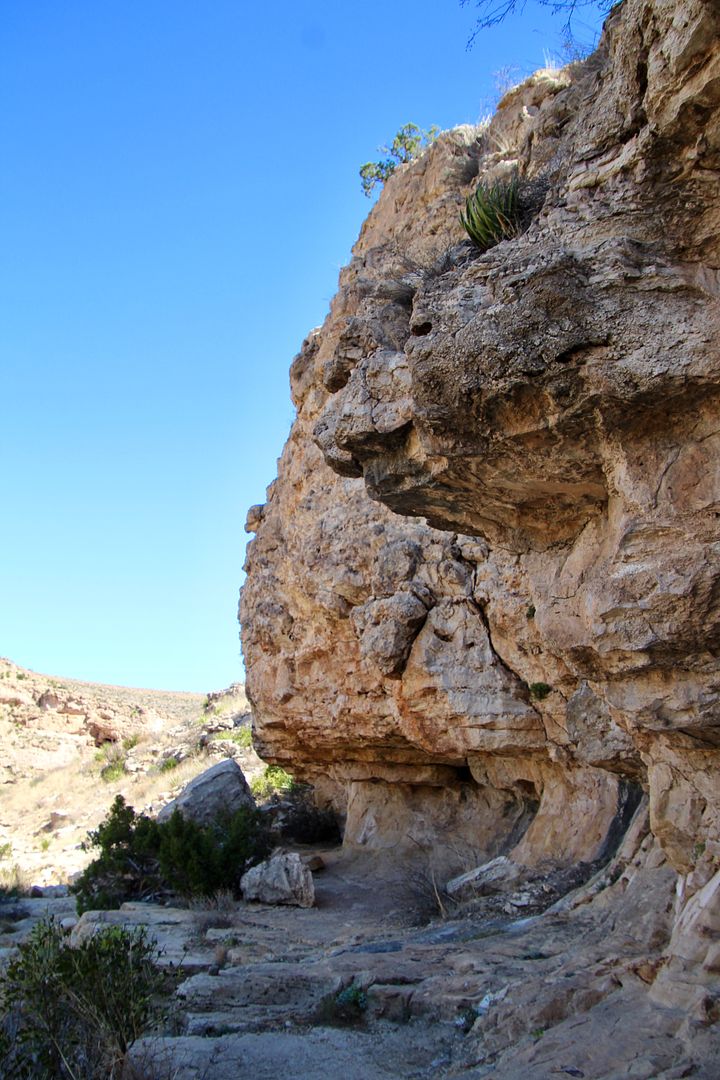
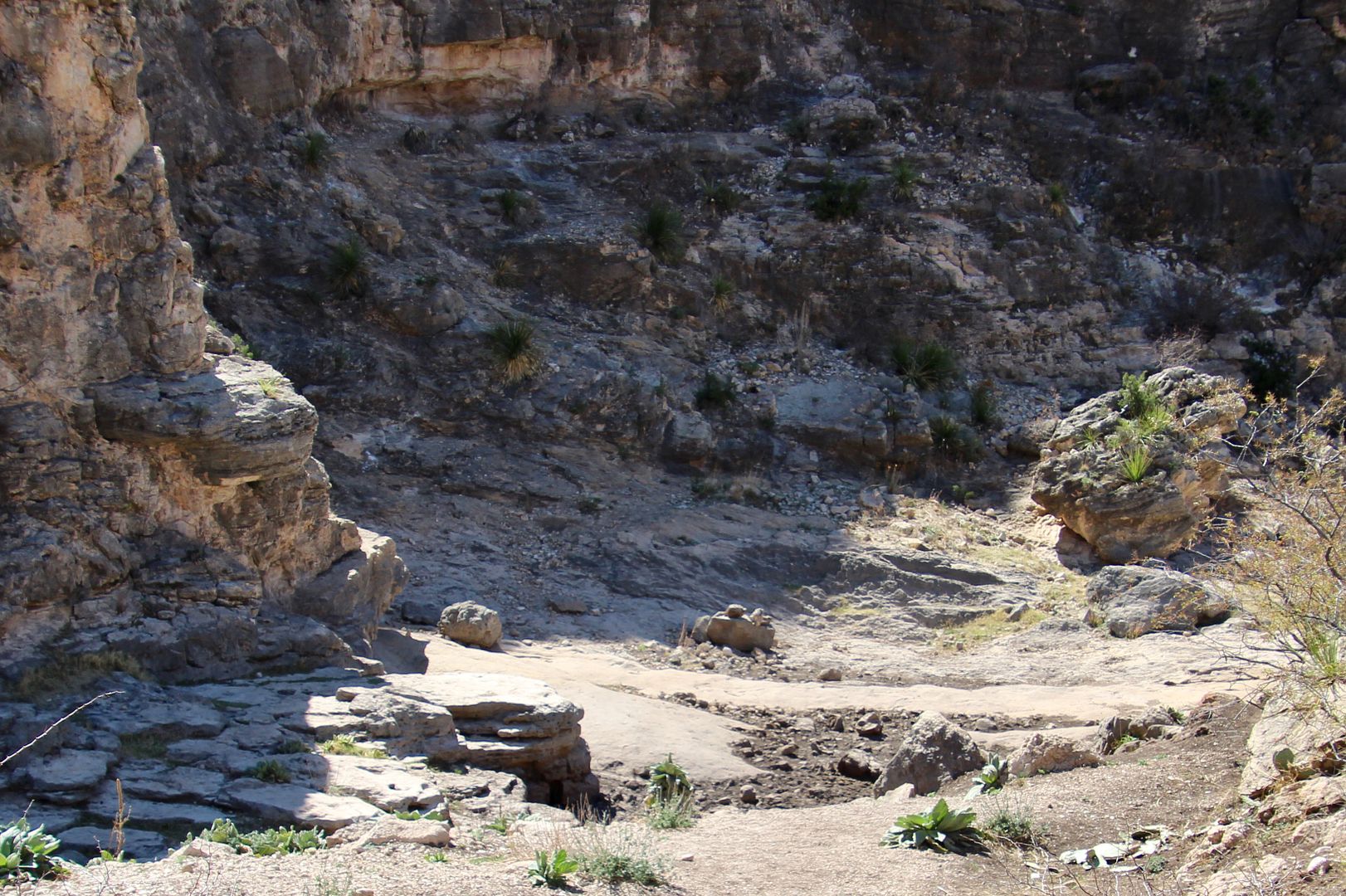
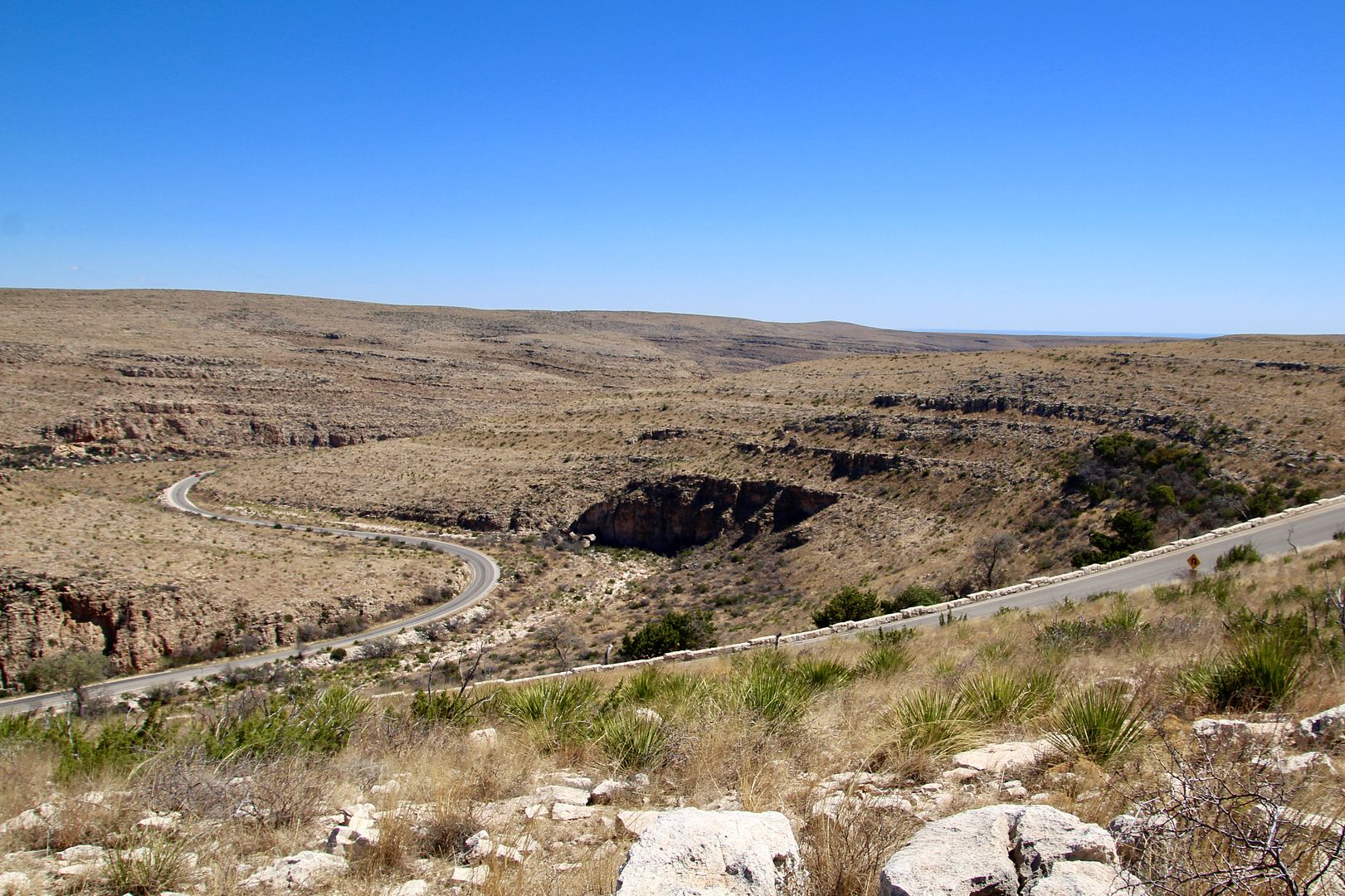


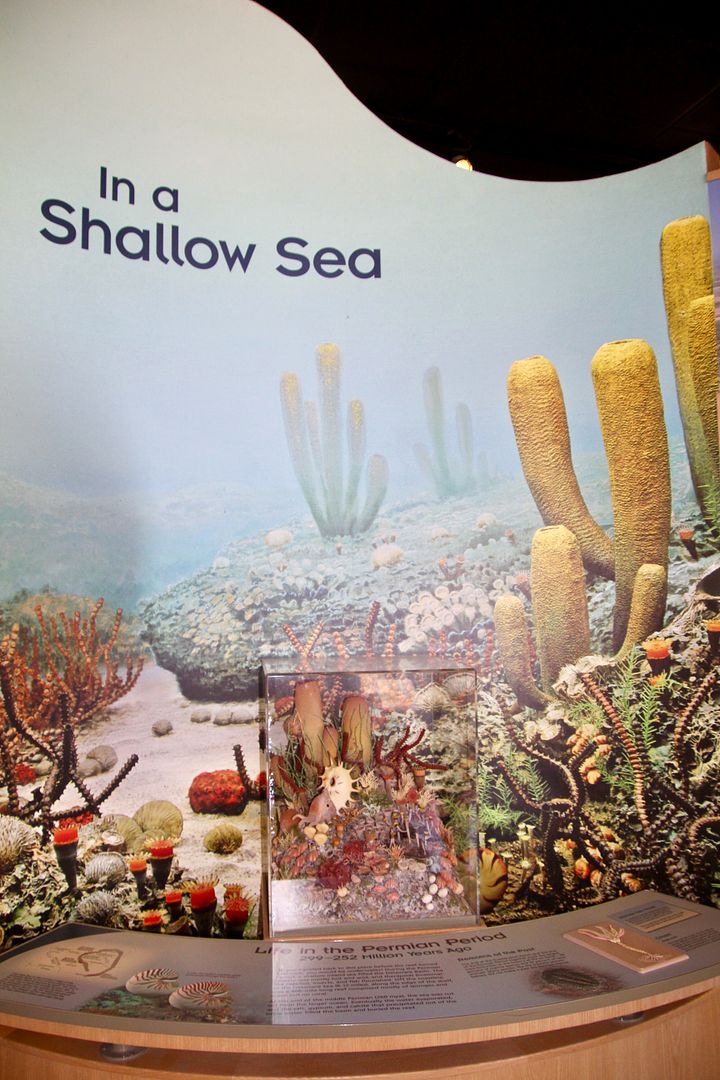
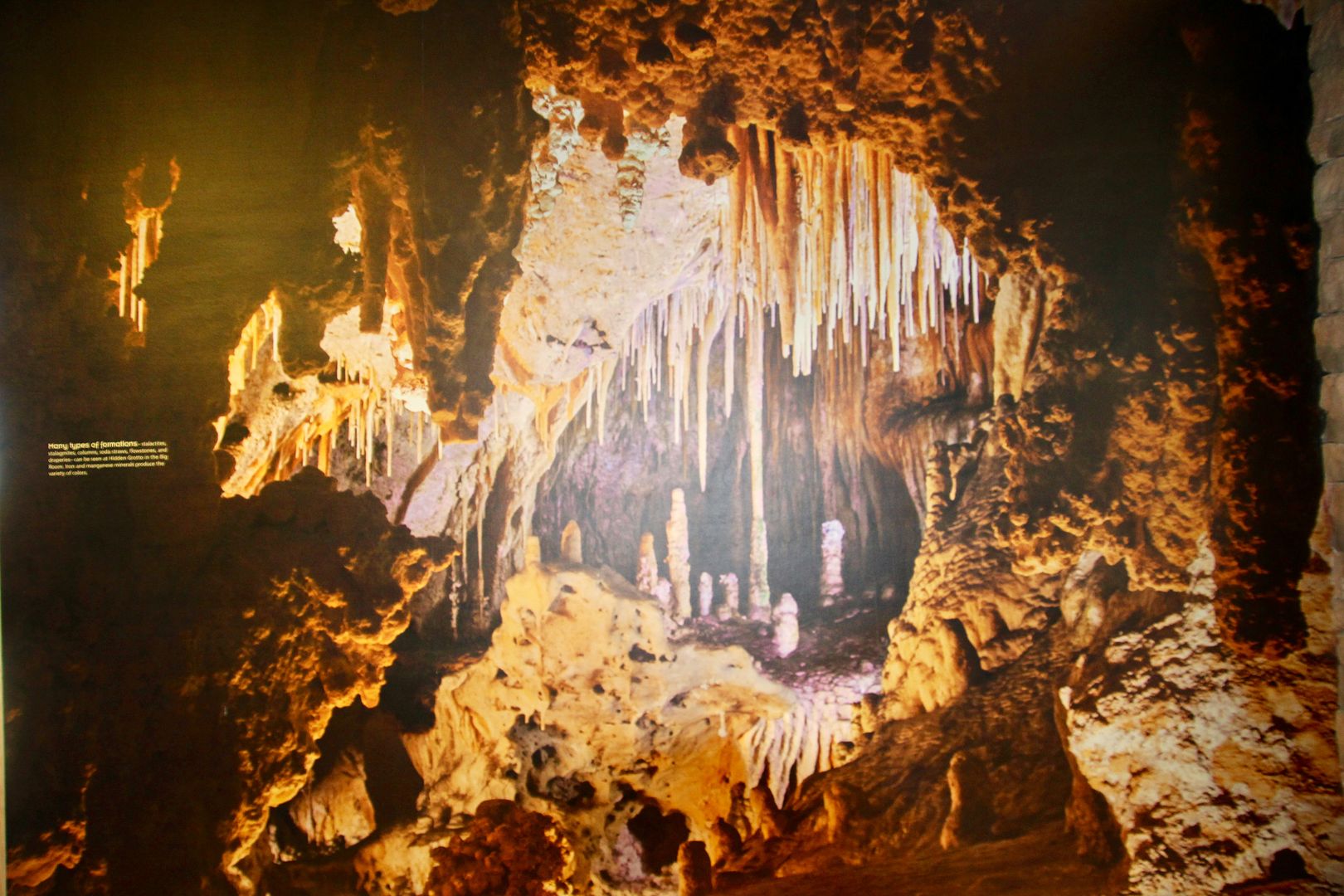
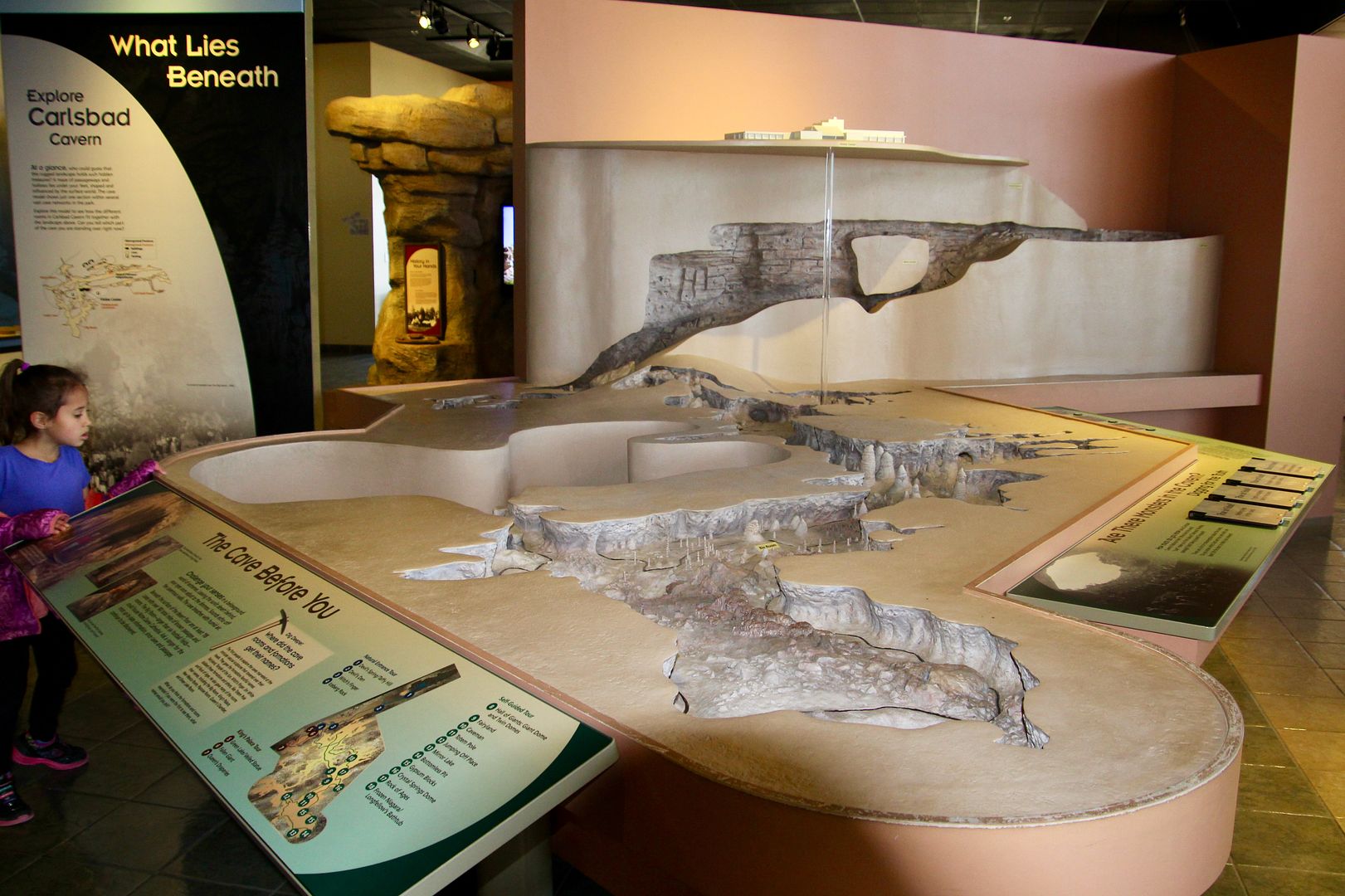
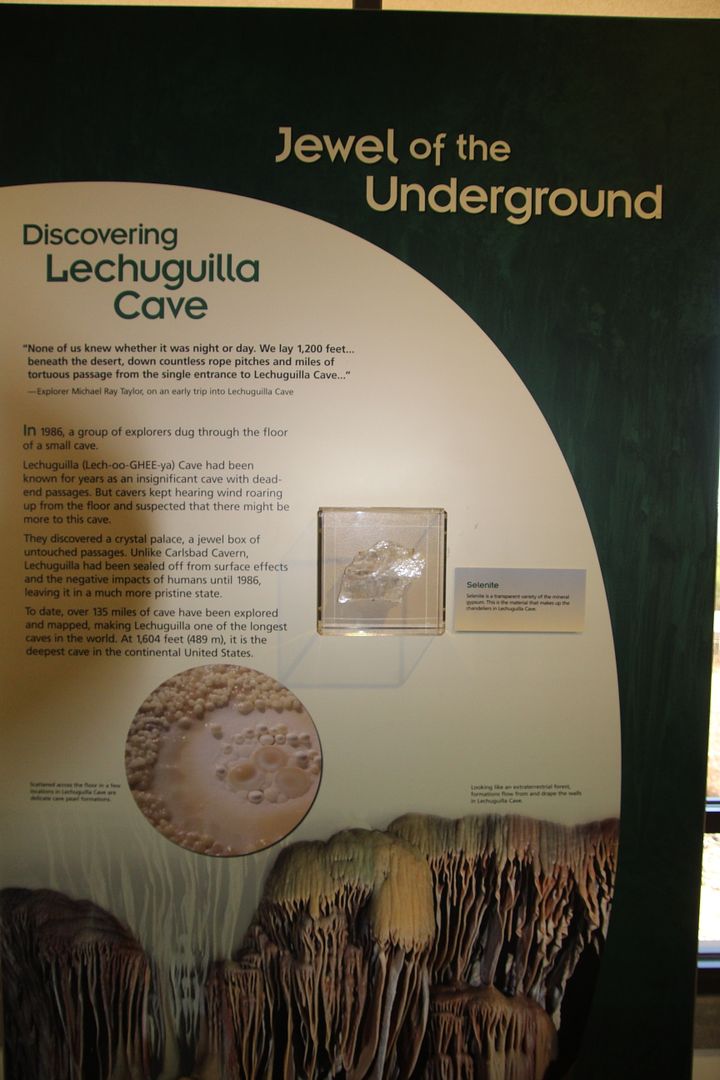
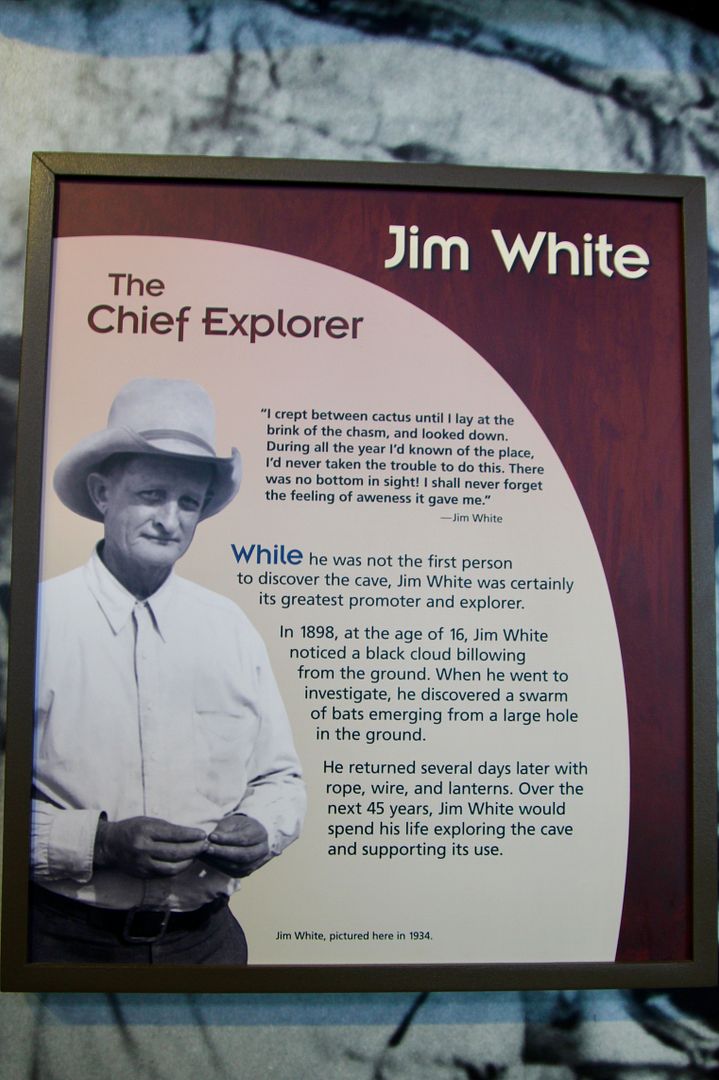
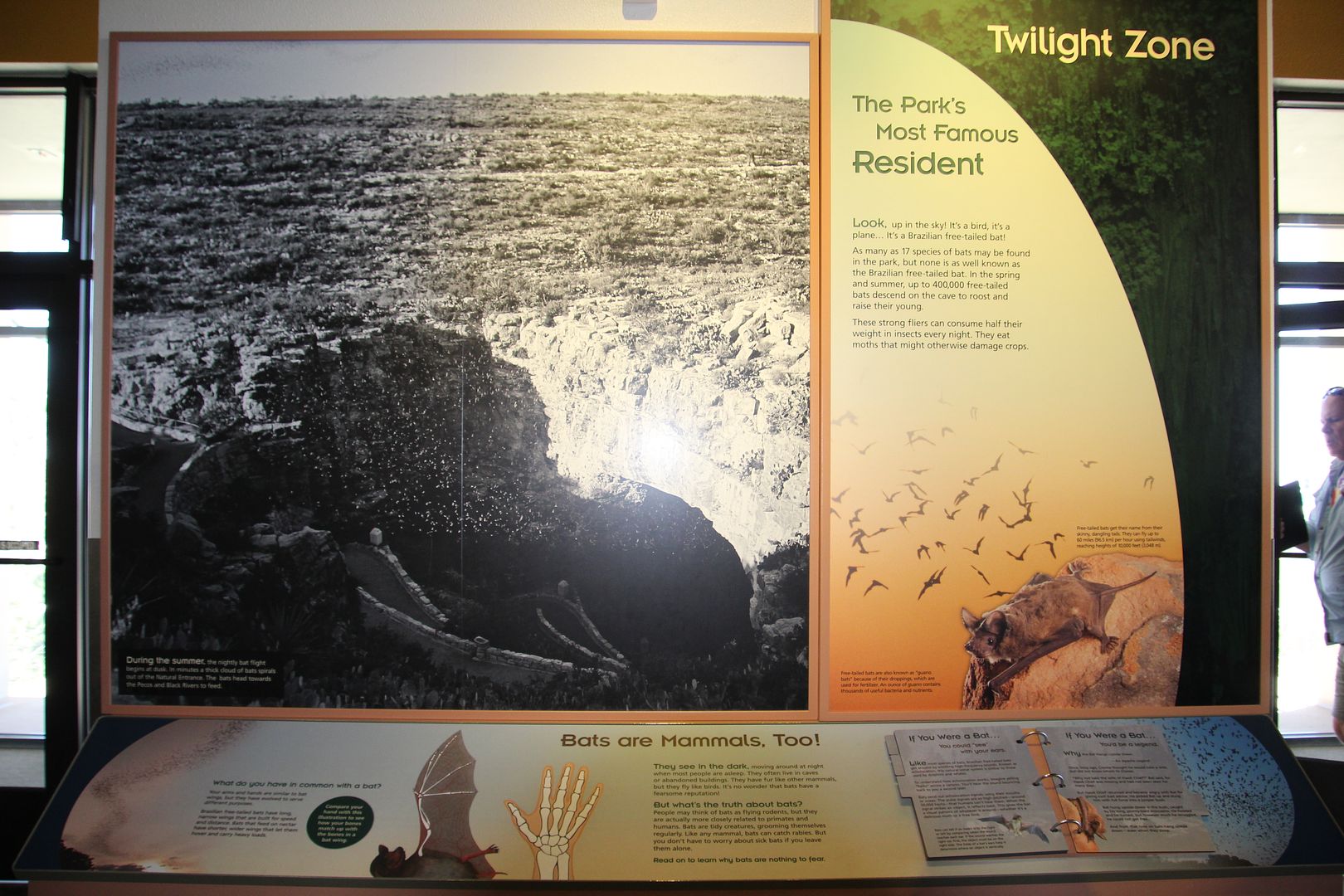
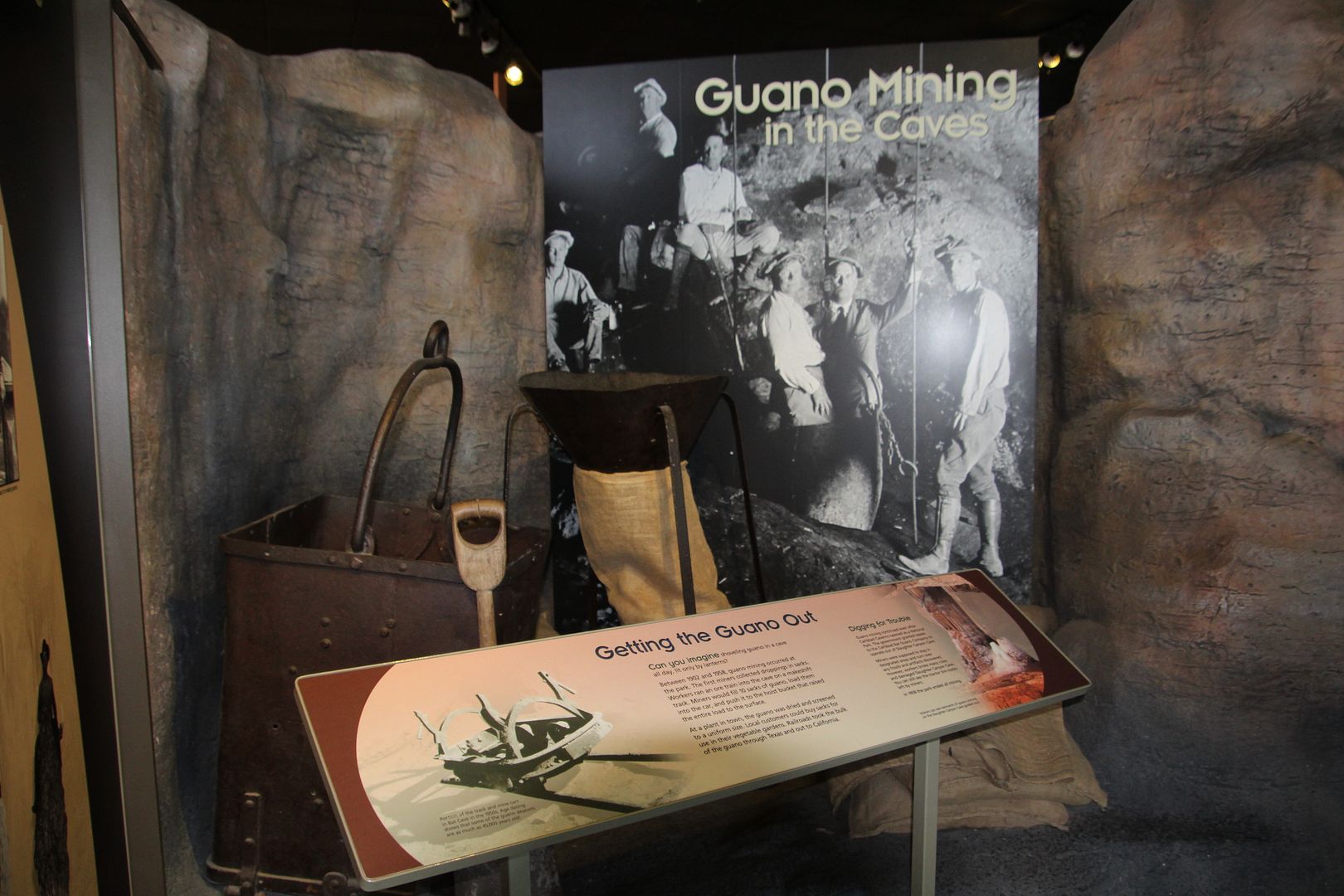
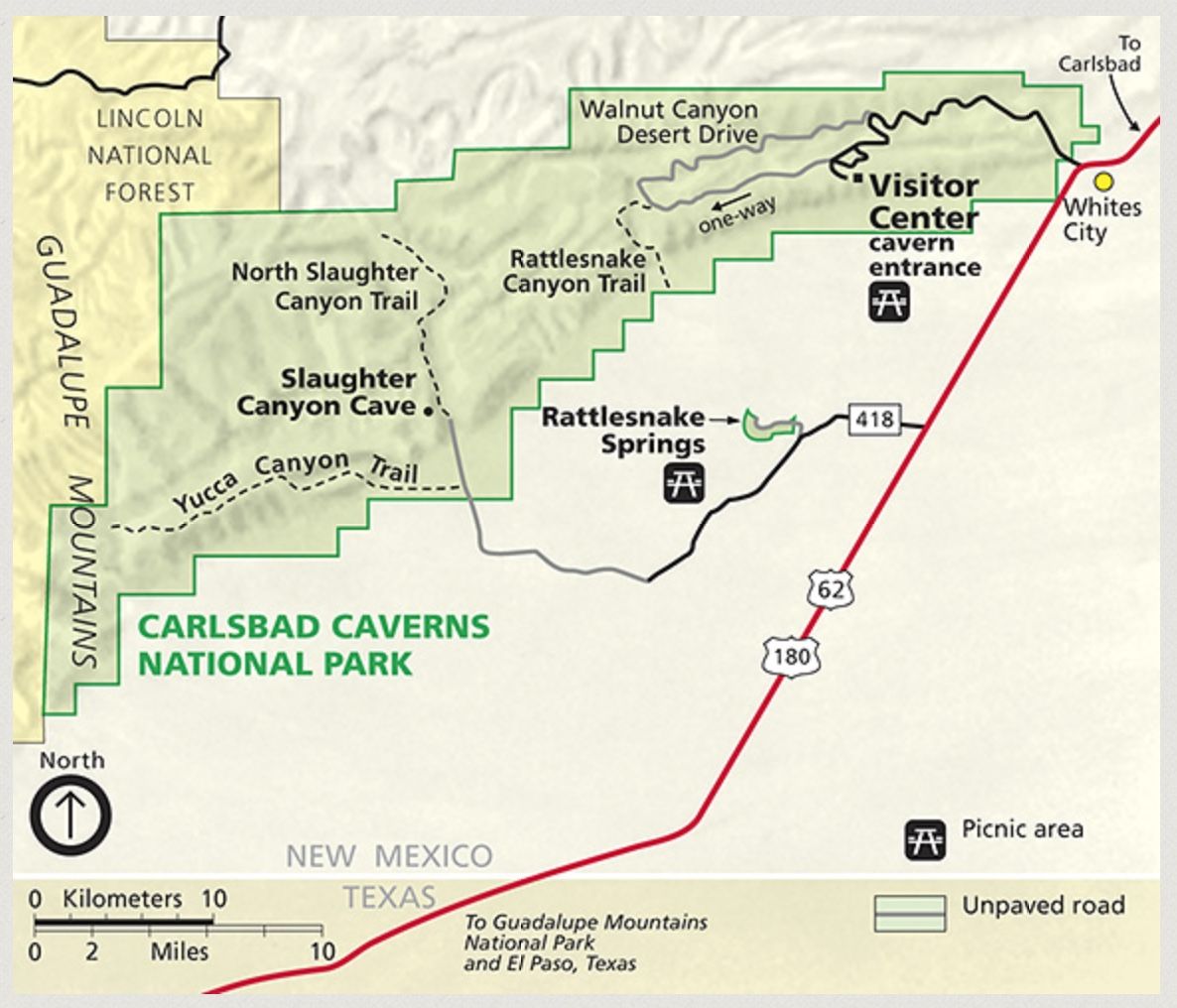
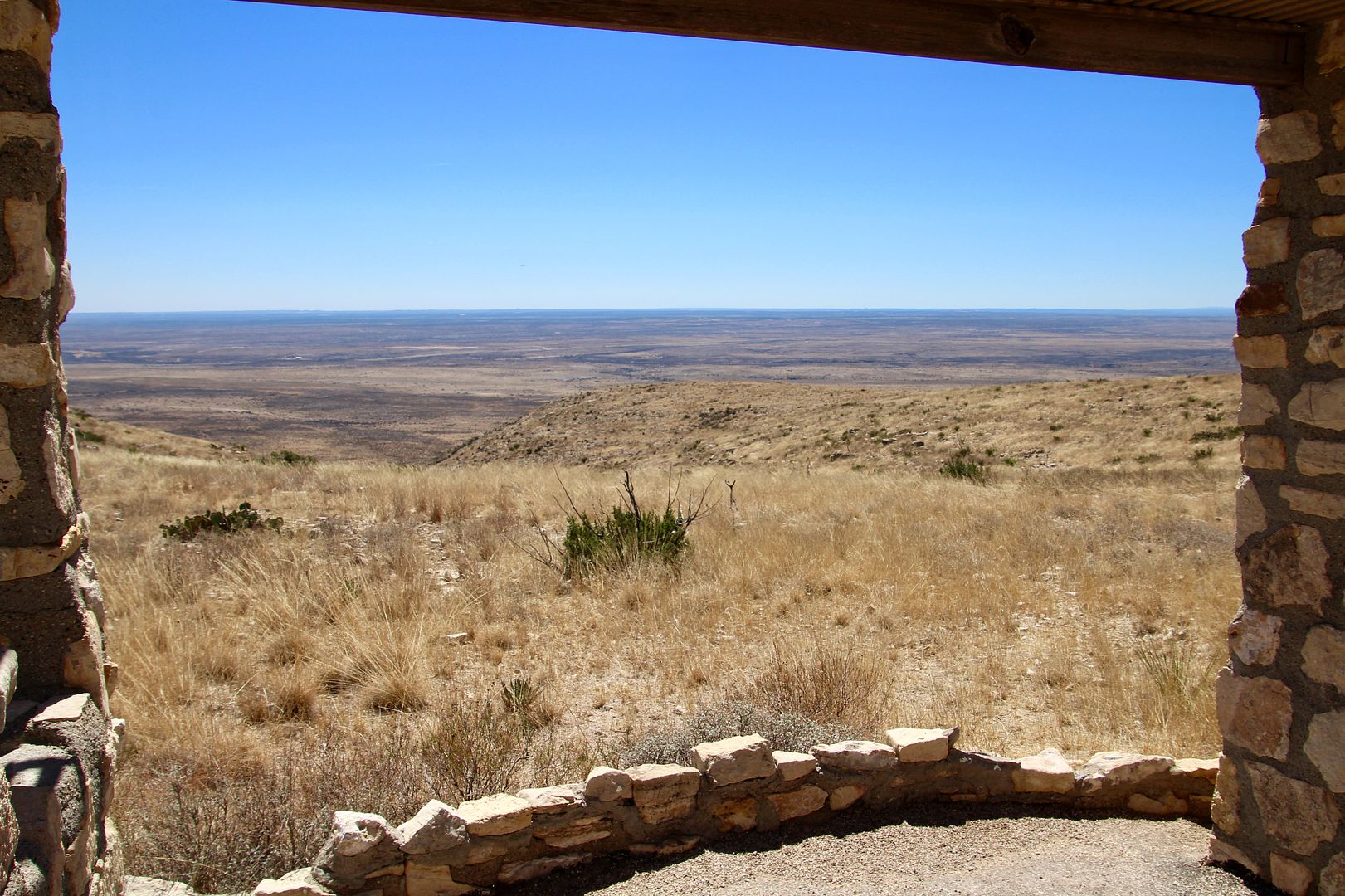

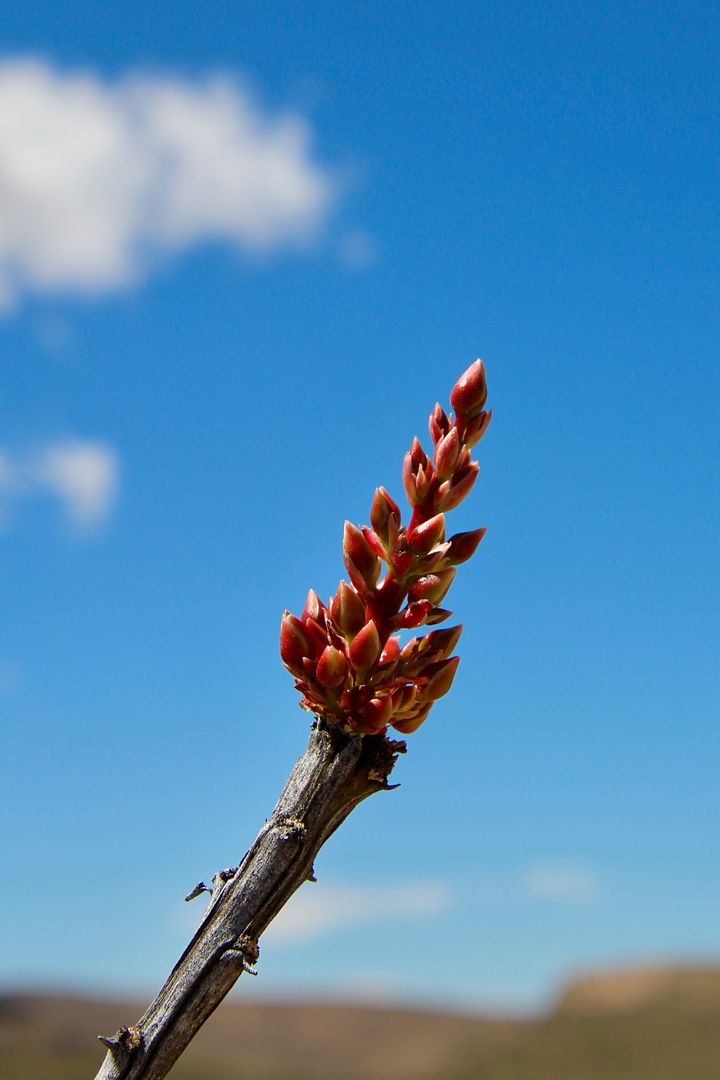
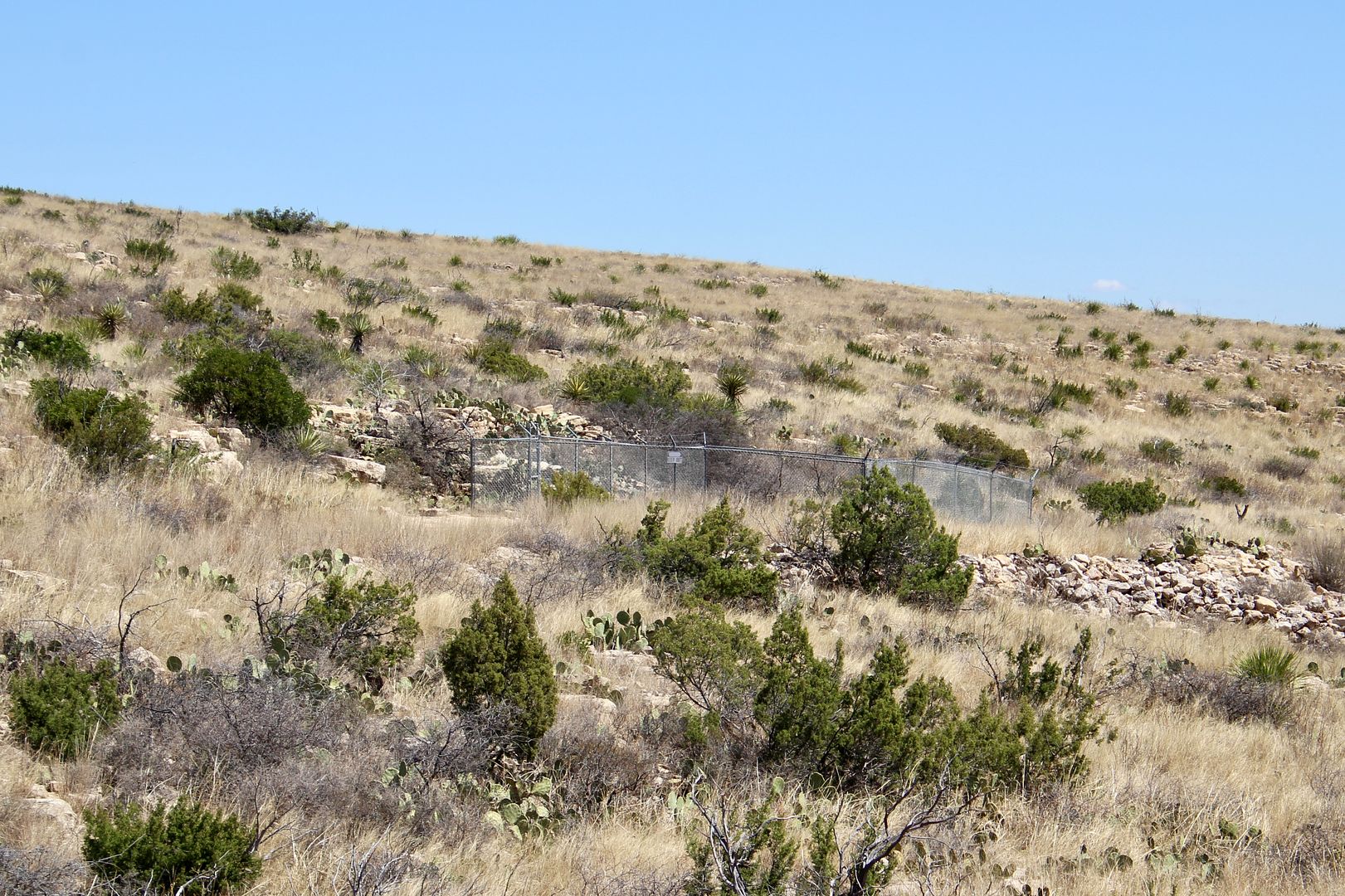
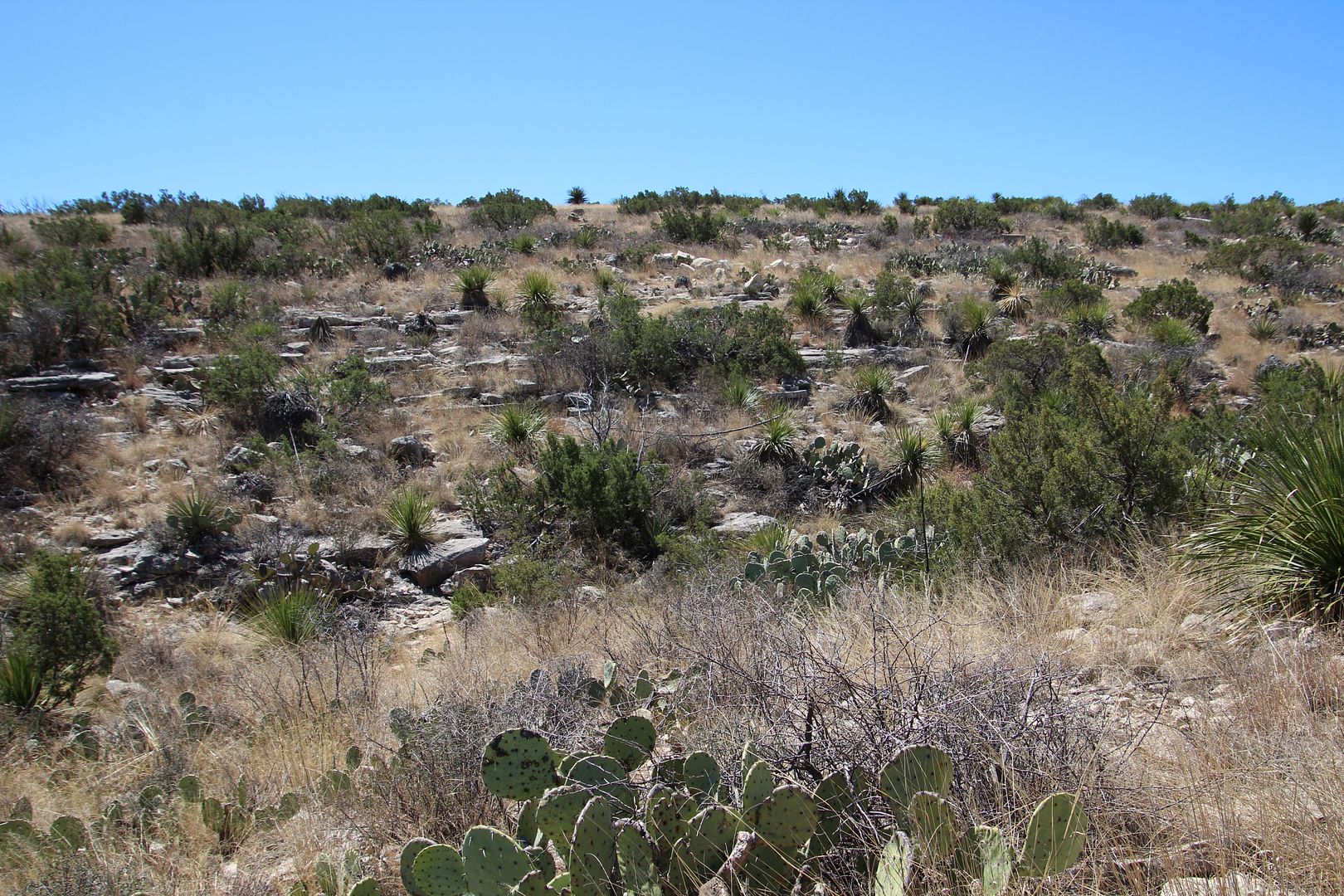
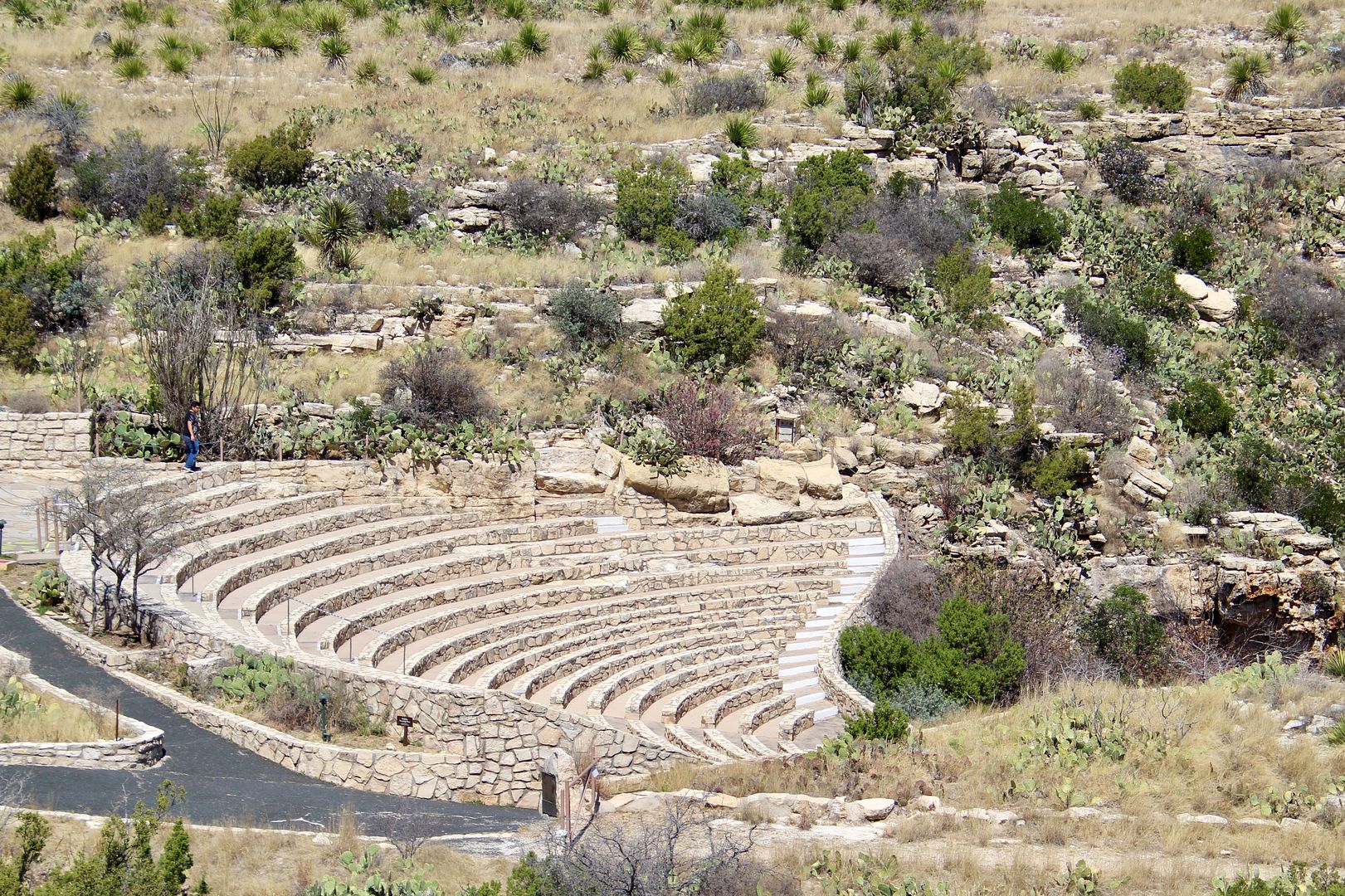

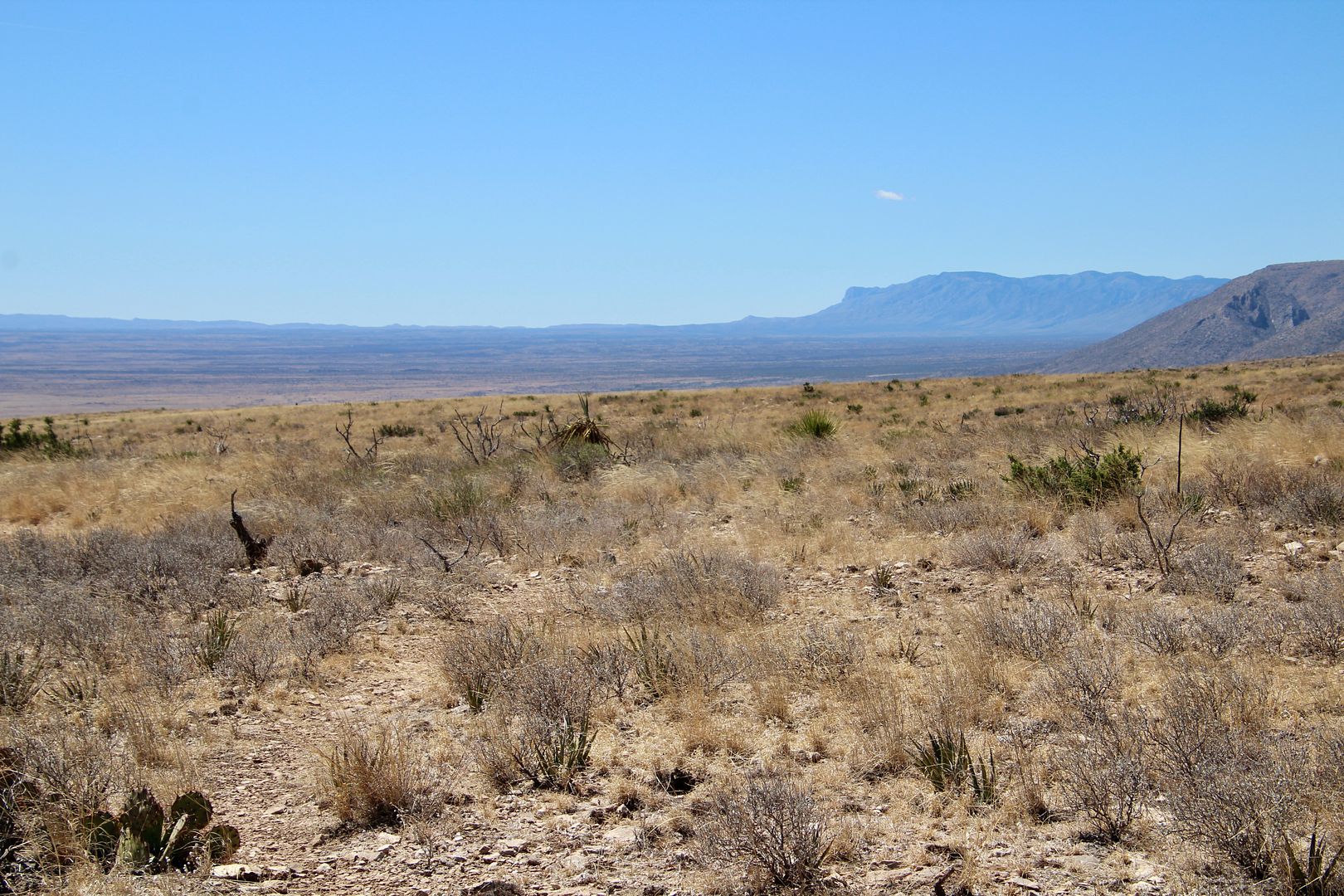
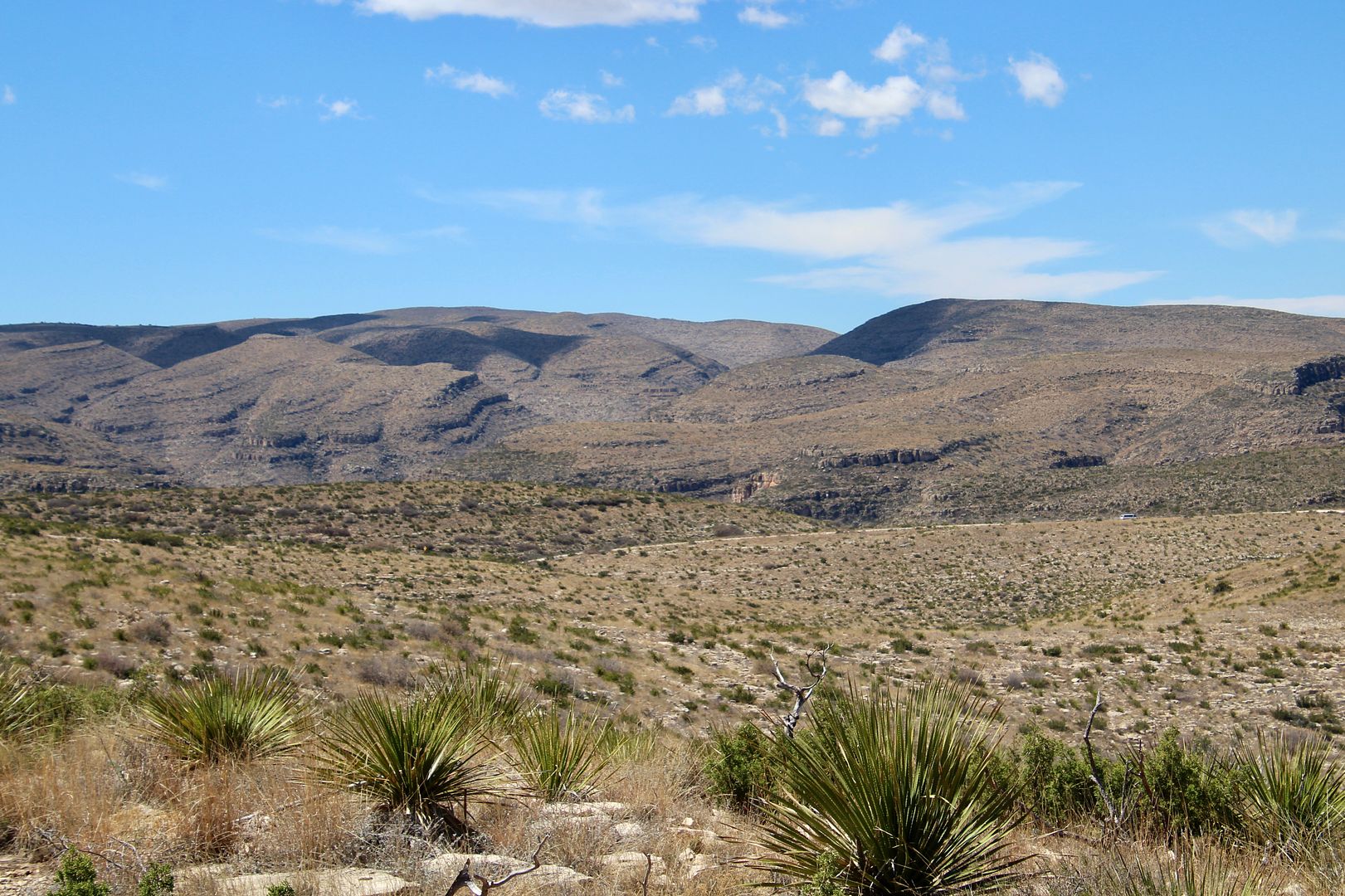

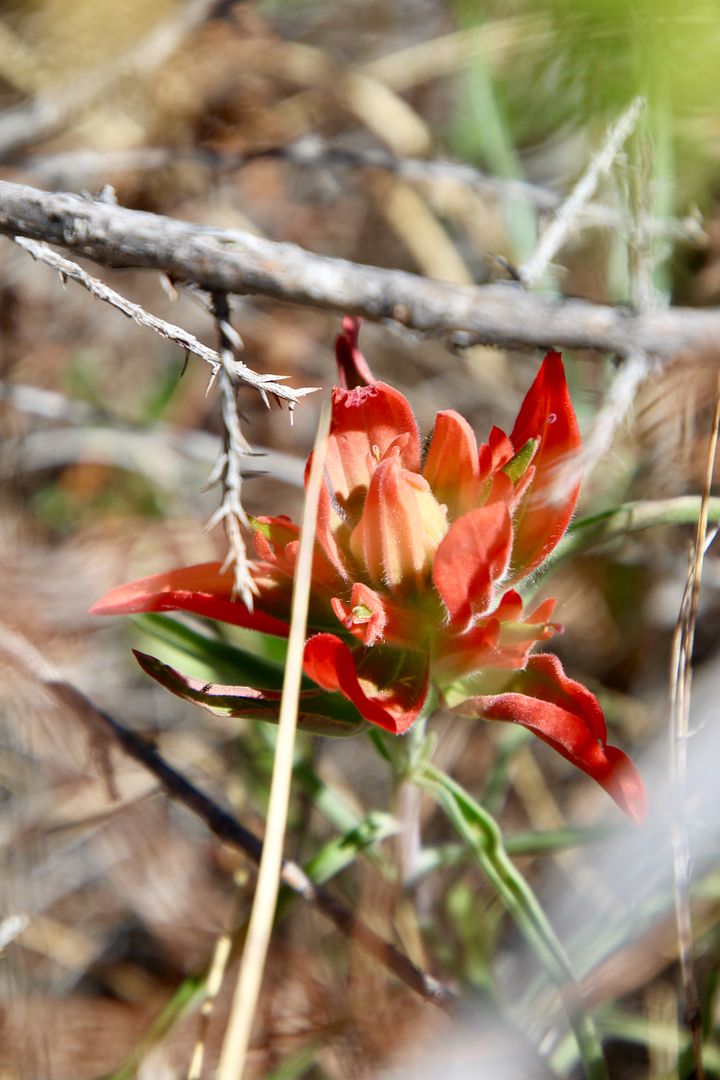
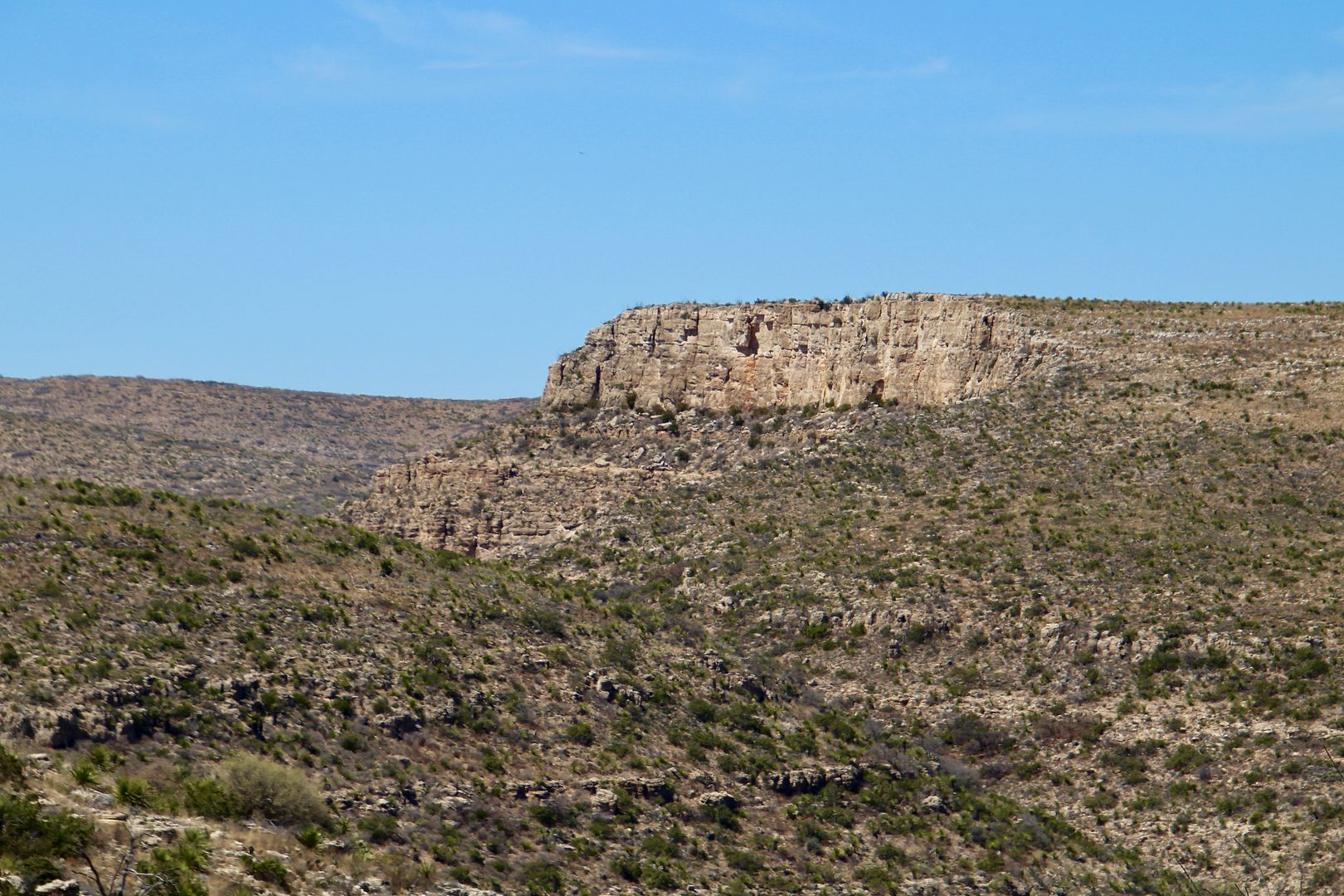


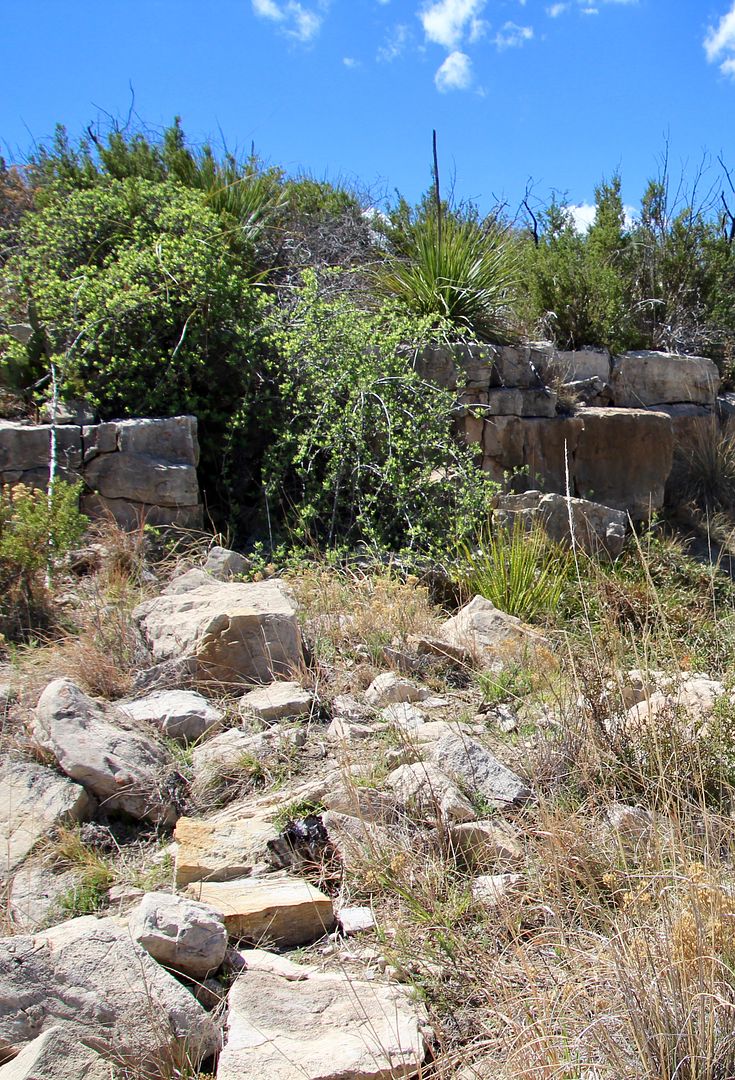
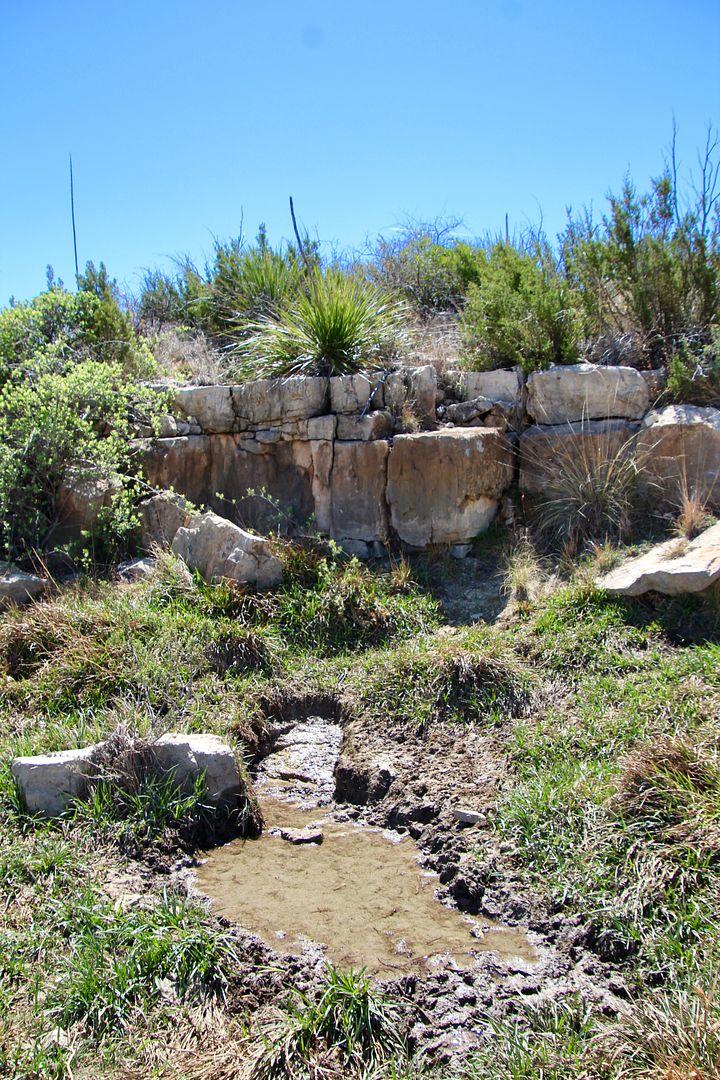
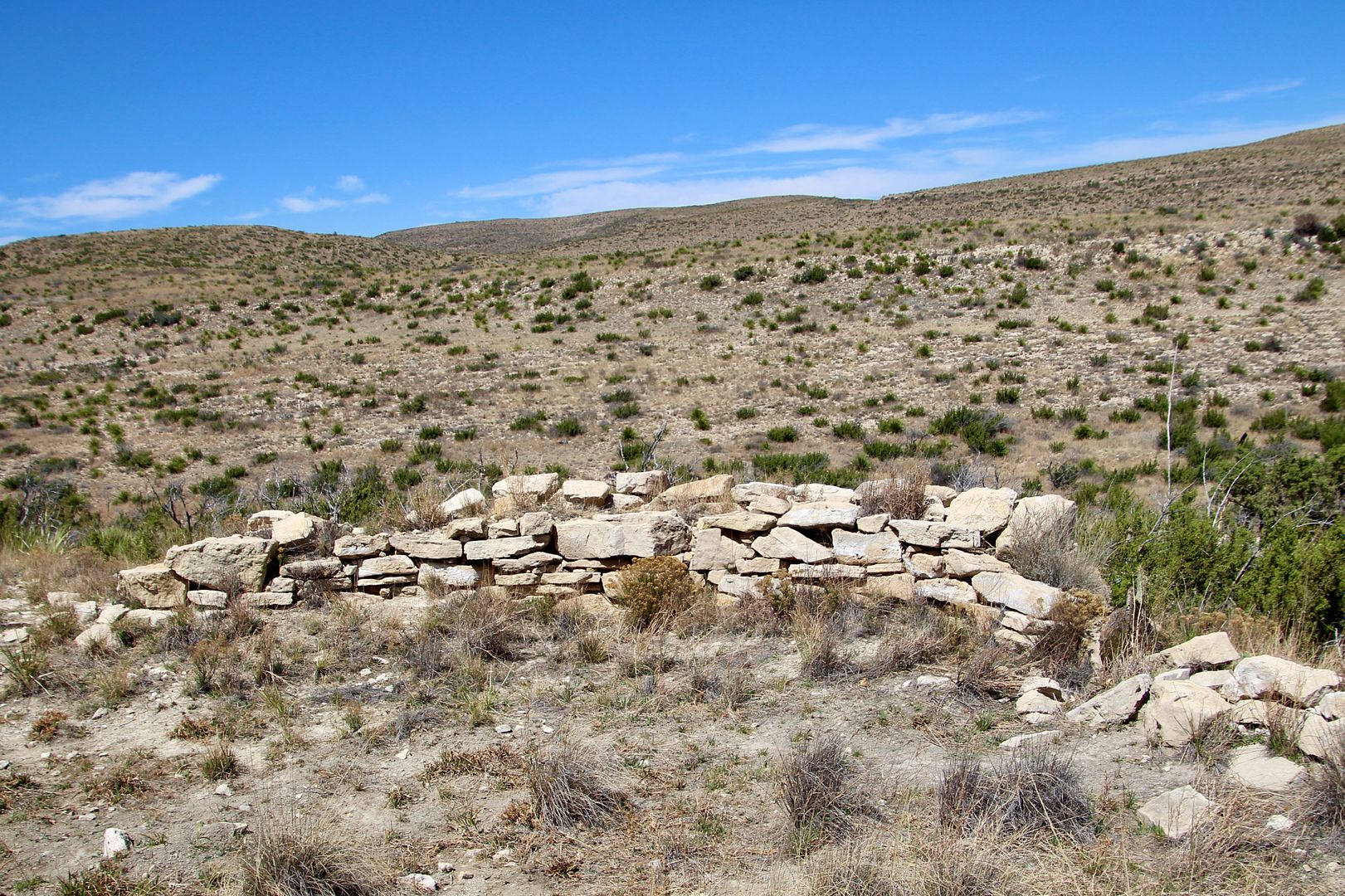
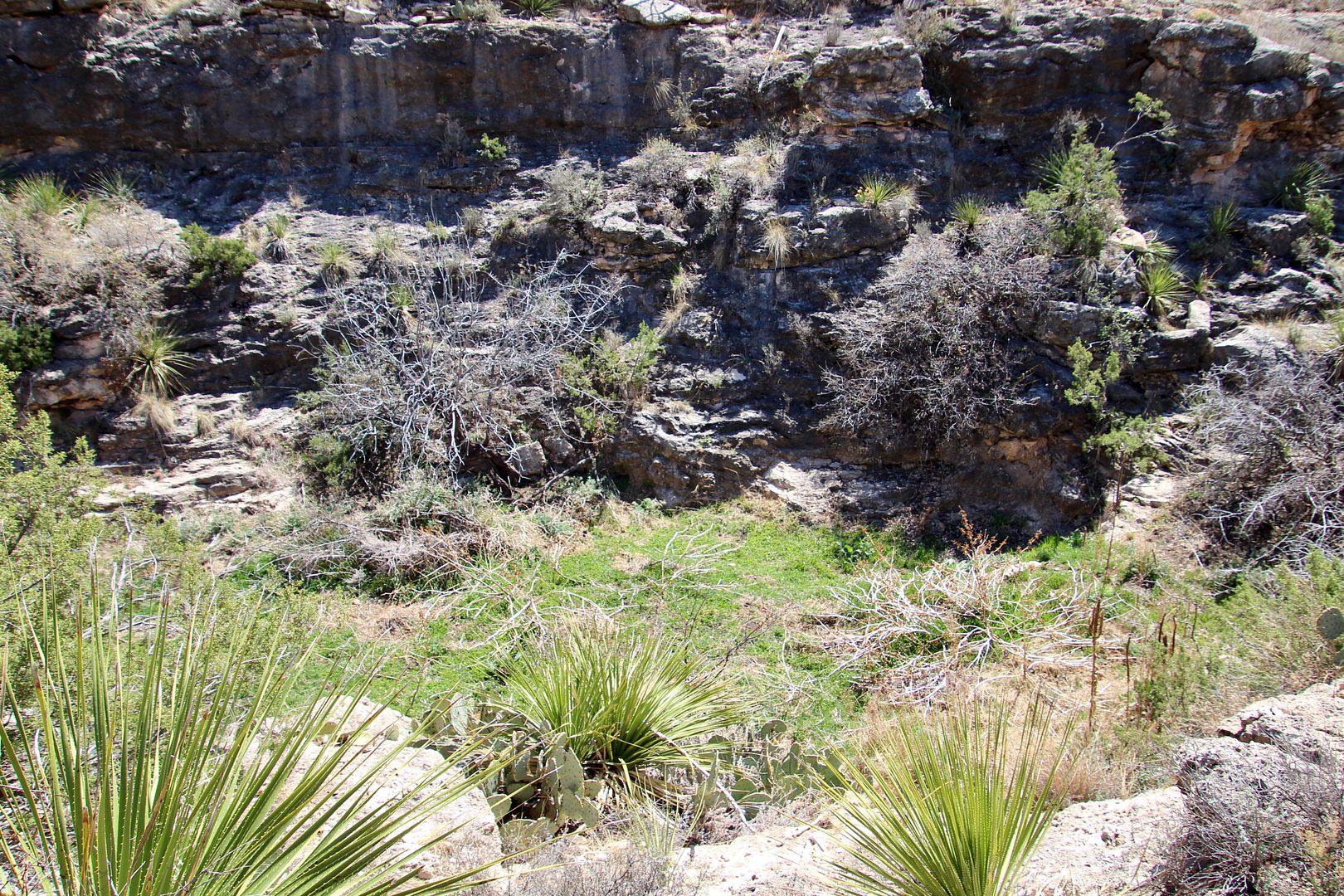

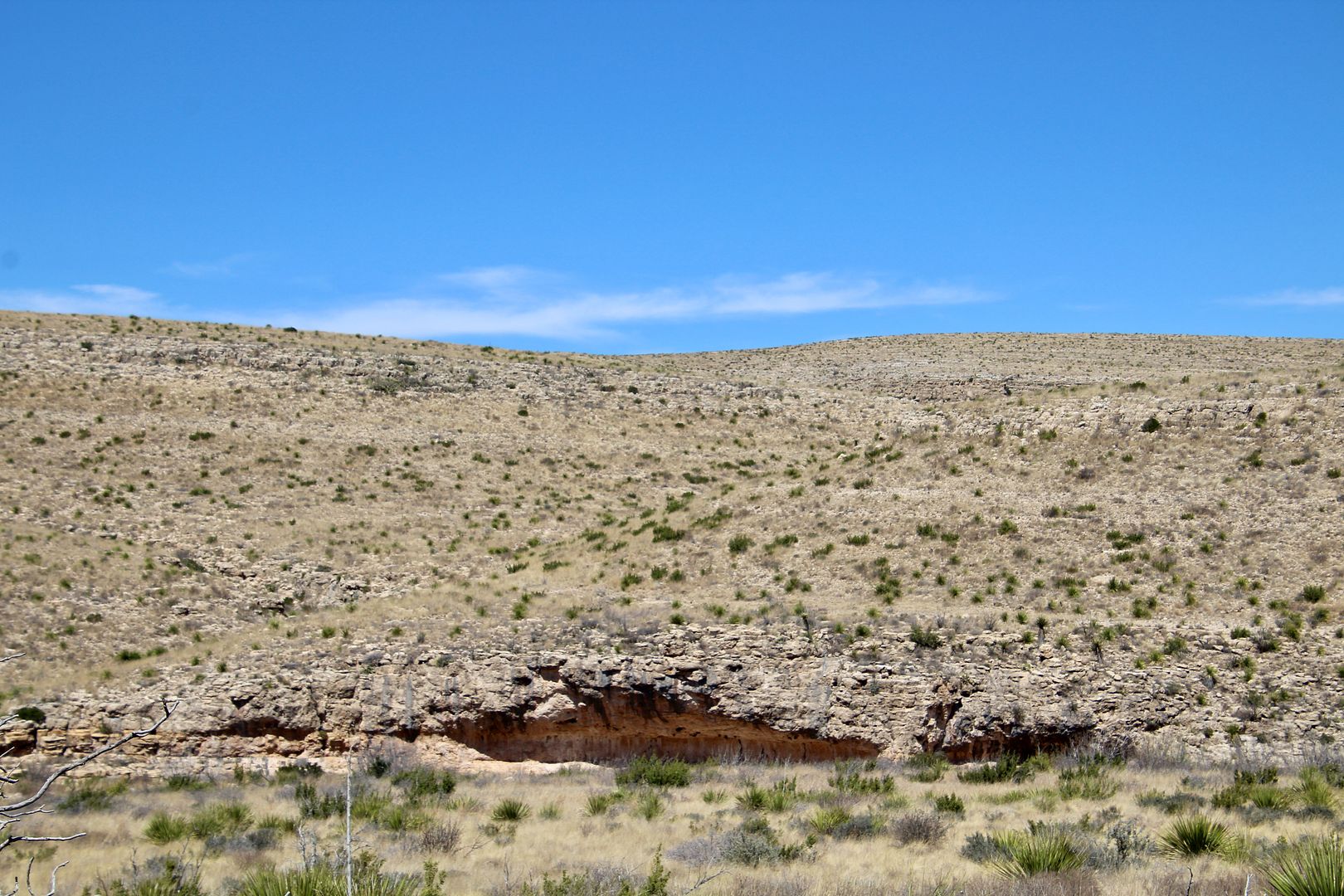
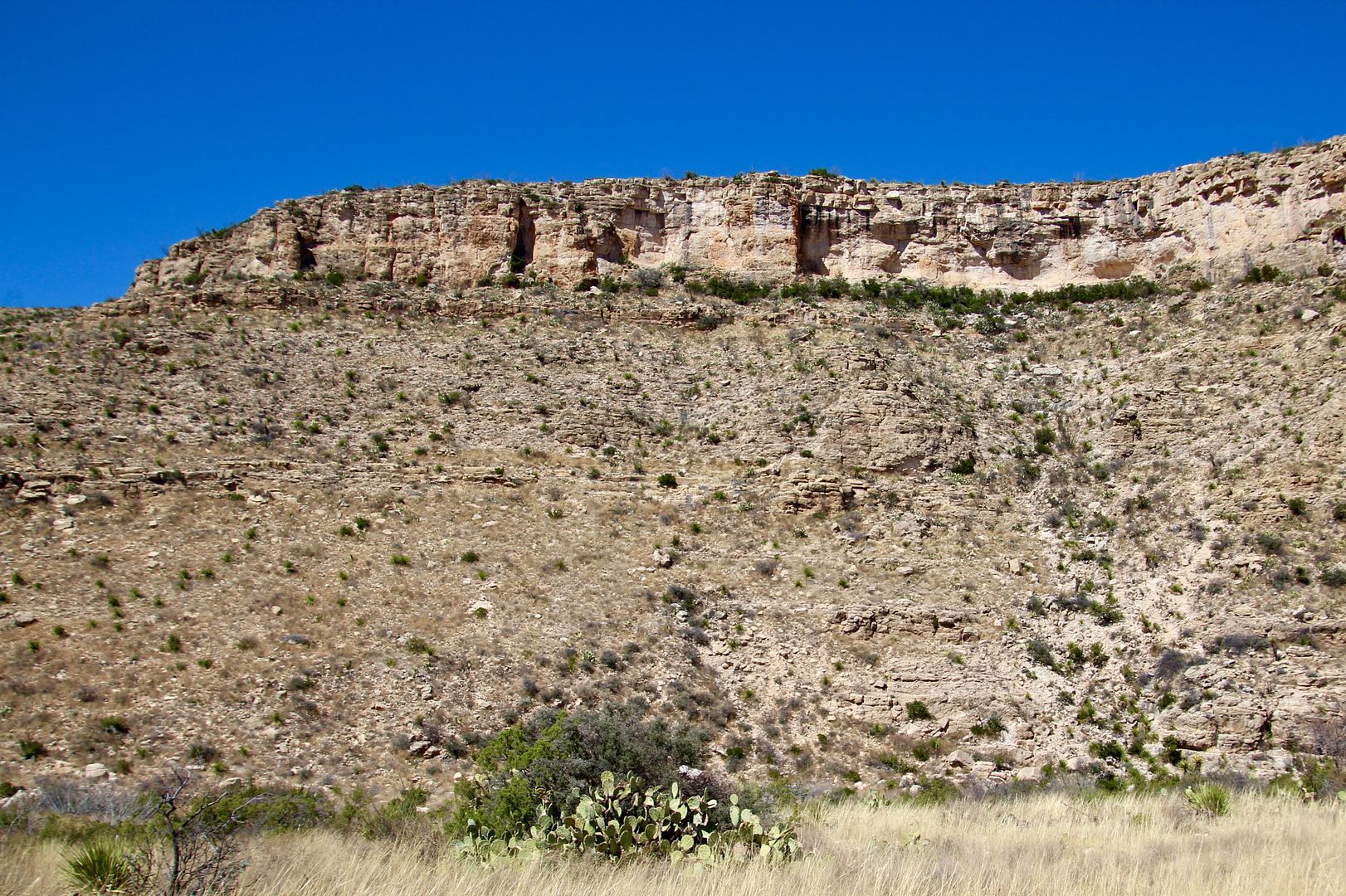
No comments:
Post a Comment